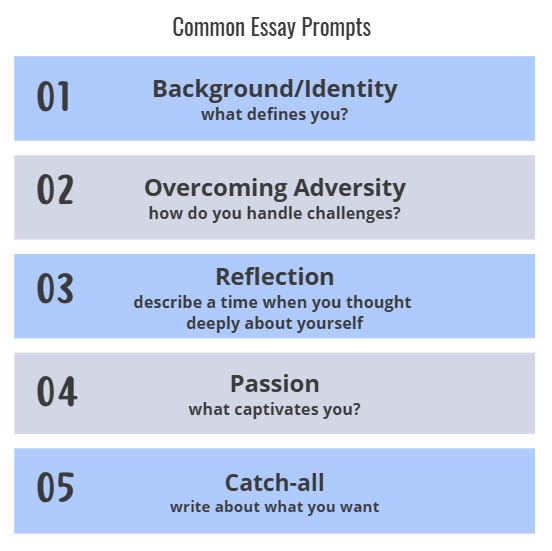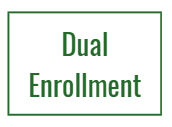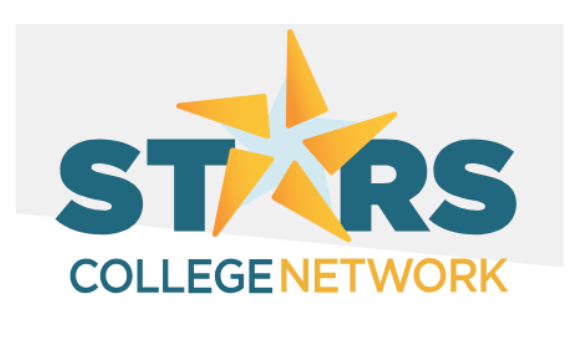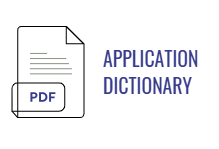Preparing for College (High School Checklist)
Freshman Year – Explore!
Get involved in activities that interest you
- Select courses that challenge you
Talk to your counselor about your interest in going to college
- Talk to your parents about college
Sophomore Year – Develop your:
Study skills
Time management skills
Critical thinking skills
Comprehension skills
Junior Year – Time to focus!
Set goals for the year!
Begin your college list.
Look at the admission requirements
Note your deadlines
Think about taking the SATs
Do you need to take the test?
Meet with your counselor for a waiver
Find your recommenders
Do your teachers/coaches/counselors know you?
Are they willing to write a letter? Begin asking
Plan your senior schedule
Make meaningful summer plans
Visit college campuses (in-person or virtually)
Start looking at scholarships
Senior Year – APPLY!
Make sure you are on track to graduate
Finalize your list
Plan how/when you’re going to apply
Register/retake the SATs (if needed)
Begin your college application(s)
Talk to your guidance counselor
Submit the required supporting school forms
Submit your application(s)
Apply for Financial Aid
Review your acceptances & financial aid letters
Make your decision
Celebrate!!
SAT Information
What is the SAT?
The SAT (Scholastic Aptitude Test) is an entrance exam used by most colleges and universities to make admissions decisions. It is a multiple-choice test created and administered by the College Board and is used to measure a high school student’s readiness for college.
Should I take the SATs? If so, when?
It depends! Some schools are “test-optional,” which means that you can choose whether to submit an SAT score with your application, and it won’t be counted against you in the review process if you do not have one. Some schools (usually the more selective ones) and some programs (like nursing, engineering, and accelerated programs) require that you submit a score. Colleges may also look at your SAT scores for certain scholarships!
SO it all depends on what you want to study and where.
As for when, you can take the SATs during the spring of your junior year! This way, you can retake it in the fall of your senior year. I wouldn’t suggest taking the SATs later than December of your senior year.
To register for the SATs, create an account with the College Board (you will need to complete a student profile). Register for testing date (typically in August, September, October, November, December, March, May, & June). Then choose a test location.
Talk to your guidance counselor to see if you qualify for an SAT fee waiver. This will allow you to take two (2) tests for free and will allow you to apply to colleges for free!
Make sure that your test device has Bluebook downloaded. Your school-issued computer should, but check with IT if you cannot find it.
On the website, you can also take practice tests and create a study plan for the SATs. Websites like schoolhouse.world also offer FREE SAT prep courses!
A Quick Note for Student Athletes
If you want to practice, compete, and receive an athletics scholarship during your first year at a Division I or II school, the NCAA Eligibility Center must certify you as eligible. Register for a free profile early in your high school career and familiarize yourself with your high school’s list of NCAA-approved core courses (speak to your guidance counselor!). You will request for “Academic and Amateurism Certification” in your senior year. Click on the logo to view the NCAA website.
If you are serious about playing college sports, consider creating a free profile with NCSA. This will allow college coaches to view your profile. You can upgrade to a premium membership for more access to college coaches.
You can also visit your college’s athletics page! There, you can find out how you can get in contact with the coaches.
The College Search
Begin your search by considering these questions and take note of what you found:
What do I want to do?
- Think about your interests and future goals. What colleges offer classes that you would take?
Where do I want to be?
- Think about how comfortable you are with being away from home; if you are, how far away from home? What is far for you?
Will I like being there?
- Do you prefer smaller or larger classes? Will it matter to you if your professor knows your name?
How hard will it be to get in?
- Selectivity. What is the acceptance rate (4% is very selective, think Ivy League)? Do they want an SAT score? Average GPA of their most recent accepted class?
Can I afford to go?
- How much will it cost for you to attend? What is their average financial aid offer? USE THE NET PRICE CALCULATOR.
When you have your criteria in mind, begin your search! Here are some websites to help with the search:
My Next Move is perfect for college exploration or just any kinds of searching. You can take a free career quiz to learn more about what careers align with your interests and educational goals. You can also search by your career interests and find colleges for training!
College Board contains all kinds of sources for college searching, but most useful to the college search is Big Future’s College Search function!
With this website, you can personalize your search! If your major is of utmost importance, begin there. If you don’t want to be too far, then customize your location range.
You can be as specific as you want to be in the search, and when you click on the college, you can read more about their selectivity, their admission deadlines, their average costs, etc.
The STARS College Network
Most colleges recognize that there may be barriers to accessing information about higher education as a rural student.
The Small Town and Rural Students (STARS) College Network recognizes your rural identity. They aim to ensure that students like you have the information and support that you need to enroll and graduate from the college or university of your choice.
Click on the logo to learn more about the network and to view their college partners
Throughout the year, they host a variety of virtual events where you can learn more about the college application process, meet with representatives from their partner schools, and ask questions about what it means to apply to college as a rural student!
They also offer Fly-in programs for juniors and seniors, where they pay for you to come to their campus! And summer programs for underclassmen to explore college!
The List
Make a list of about 5-10 colleges. In addition to considering your answers above, look at the college’s “admission requirements.” It is good for you to know what the college is looking for in preparation for your senior year, Penn State for example, requires that you take a unit of English (4), Social Studies, Art, and Humanities (3); Science (3); Math (3); & World Language (2).
Meet with Mrs. Butler to talk about your schools and to make sure you are on track for application season. When you can, plan to visit as many of these colleges as possible!
The Application
There are many ways to apply! You can apply directly through (1) the college’s website, (2) through the Common Application, or (3) through Coalition. There is no clear advantage in applying through one or the other; it all depends on where you are applying and if they are participating with the app.
The AXS Companion is a FREE guide for the Common App. They have videos to help you complete your application!
Important terms to note:
- Early Decision (ED): This application type allows you to apply early and receive your decisions early. It is a “binding” application, so you are committing to enroll at the college if you are admitted. You can only apply ED to one (1) college and, if admitted, you must withdraw other applications. Know the deadline.
- Early Action (EA): This application type allows you to apply and receive a decision earlier. It is “non-binding,” so you will have until May 1st to confirm your enrollment. Know the deadline.
- Regular Decision (RD): Some colleges have regular decision deadlines; apply by this date to receive admission decisions. Know the deadline.
- Rolling Admission: Some colleges admit through rolling admission; you apply anytime within their application window, and they will review your application upon receipt.
What is in a college application?
- The application: the application will ask you for your personal information, educational information, and your family information.
- High school transcript
- Essay: may be optional, but it is always helpful to your application
- SAT or ACT scores: may be original, good for more selective institutions
- Letter(s) of recommendation: may be optional, depending on the college
Depending on your area of study, there may be additional materials/testing needed for your application. Meet with your advisor and/or counselor for help!
The Essay: What do I write about???
The purpose of the college essay is to determine: (1) whether you can write at a college level. (2) Who are you beyond your transcript and application?
The essay will give colleges a sense of who you are and how you may fit into their campus community. It will help you distinguish yourself in the decision process and show them what makes you unique. The essay is also a place where you can explain any discrepancies in your academic record/transcript.

Talk to your advisers for help on the essay! Also, it is good to have other people read over your drafts before submitting an application


















